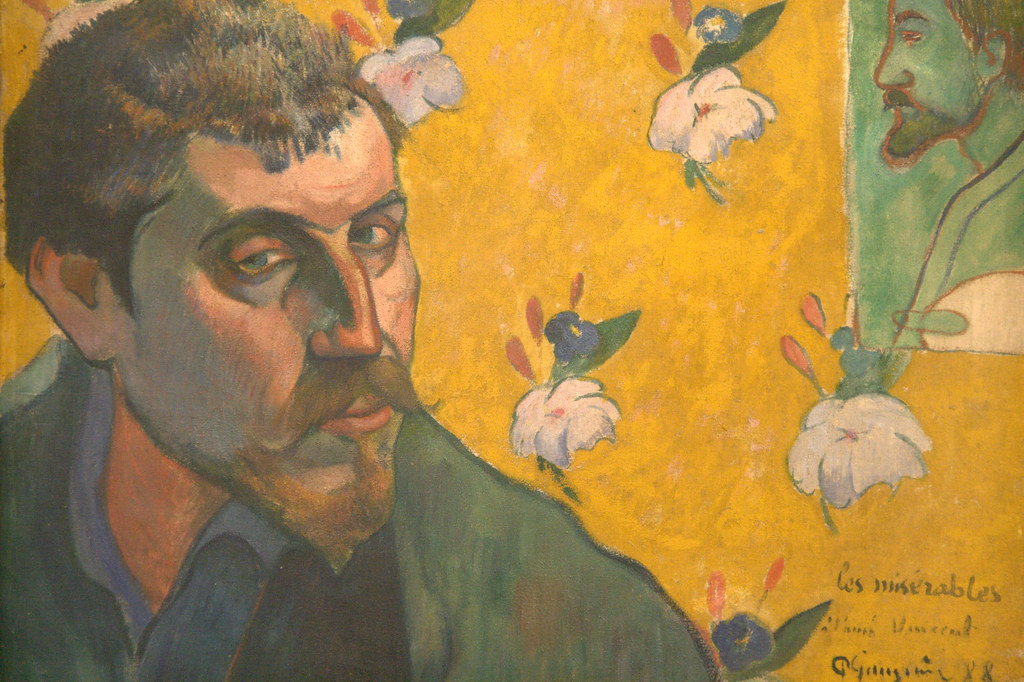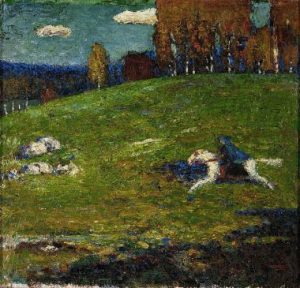Expressionism is a modernist movement born in Germany at the beginning of the 20th century. The image of reality is distorted to make it expressive of the artist’s inner feelings or ideas.

Image source:https://commons.wikimedia.org/wiki/File:Kirchner_-_Wintermondlandschaft.jpg
In expressionist art, thecolorcan be very intense and non-naturalistic, the brush stroke is free and the application of paint is generous and highly structured. Expressionist art tends to beemotionaland sometimes mystical and can be seen as an extension ofRomanticism. The term expressionist is generally applied to a specific artistic production during the early twentieth century.
Why Expressionism?

Image source:https://search.creativecommons.org/photos/d4da1842-671c-4bea-9511-0f31a1fb86cfbyronkerkhoven
Expressionism emerged simultaneously in various cities ofGermanyas a response to anxiety about humanity’s increasingly disharmonious relationship with the world, accompanying lost feelings of authenticity and spirituality. Expressionism was mostly inspired bySymbolistcurrents in late-19th-century art.Vincent van Gogh,Edvard Munch, andJames Ensorproved influential to the Expressionists, encouraging distortion of form and the use of strong colors to convey a variety of anxieties and desires. The classic phase of the Expressionist movement lasted from about 1905 to 1920 until it spread throughout Europe, informingAbstract Expressionism和影响德国艺术,也成为一个评论家al precursor to theNeo-Expressionistartists of the 1980s.
What is Expressionism?

Image source:https://en.wikipedia.org/wiki/Expressionism#/media/File:Ernst_Ludwig_Kirchner_-_Nollendorfplatz.jpg
Expressionism is considered aninternational trendrather than a coherent, art movement in the early 20th century. It has embraced various fields: music, literature, theatre, art, and architecture. Rather than physical reality, expressionist artists sought to expressemotional experience. The term Expressionism is complex and has meant different things at different times. However, when speaking of Expressionist art, one thinks of either of the artistic trends that followed as a reaction toImpressionismin France or to the movement that emerged in Germany and Austria at the beginning of the 20th century. The term can thus host artists ranging fromVincent van GoghtoEgon SchieleandWassily Kandinsky.
German Expressionism
In Germany, Expressionism is associated withtheBrückeandDer Blaue Reitergroups. The art of German Expressionism was inspired by mysticism, the Middle Ages, primitive times, and the philosophy ofFriedrich Nietzsche, whose ideas were very popular and influential at the time.

Brückewas formed in Dresden in 1905 and was a bohemian collective of expressionist artists who opposed Germany’s bourgeois social order. The four founding members were Ernst Ludwig Kirchner, Fritz Bleyl, Erich Heckel, and Karl Schmidt-Rottluff, none of whom had received formal art education. The name, Brücke, indicated theirdesire to unite past and present,名字是激励d by a passage from Friedrich Nietzsche’sThus Spoke Zarathustra. To escape the confines of modern bourgeois life, the artists have explored an intensified use of color, a straightforward and simplified approach to form, and free sexuality in their work.
French Expressionism
In France, the artists associated with Expressionism were Vincent van Gogh, Paul Gauguin, andHenri Matisse. Although Van Gogh and Gauguin were active in the years slightly before what is considered the main period of Expressionism (1905-1920), they can undoubtedly be considered Expressionist artists, who painted the world around them not simply as it appeared to them but from a deeply subjective, human experience. Matisse, Van Gogh, and Gauguin used expressive colors and brushstroke styles to representemotions and experiences, moving away from the realistic representation of their subjects to how they felt and perceived them.
![Vincent van Gogh - Morning, Going out to Work (after Millet) [1890]](https://live.staticflickr.com/4101/4798788524_9d4875489c_b.jpg)
Austrian Expressionism

An artist who had a great impact on the German and Austrian Expressionist scenes was the NorwegianEdvard Munch, known for his Secession exhibitions and the 1909Kunstschauin Vienna. Munch is famous forThe Scream, which is represented a figure on a bridge with a sunset behind, emitting a desperate scream.
Info sources:https://www.britannica.com/art/Expressionismhttps://en.wikipedia.org/wiki/Expressionismhttps://www.theartstory.org/movement/expressionism/https://magazine.artland.com/art-movement-expressionism/https://www.tate.org.uk/art/art-terms/e/expressionism

